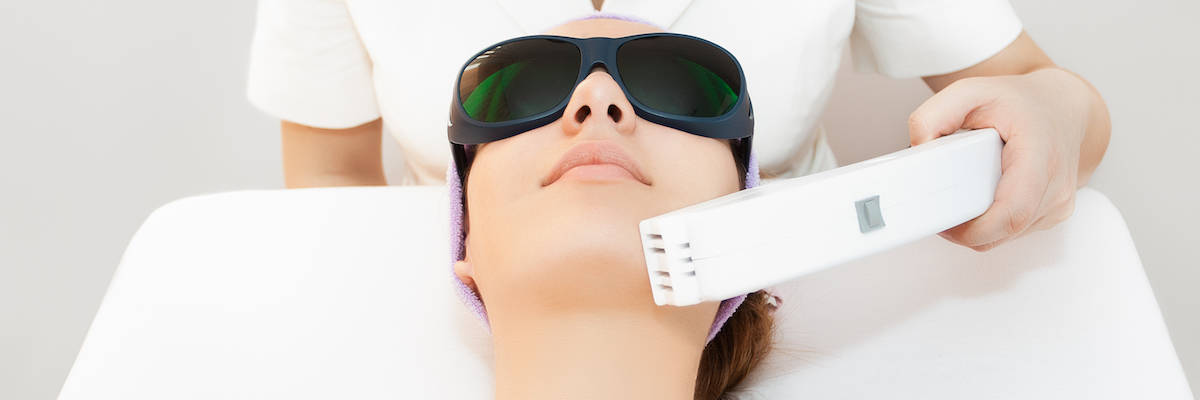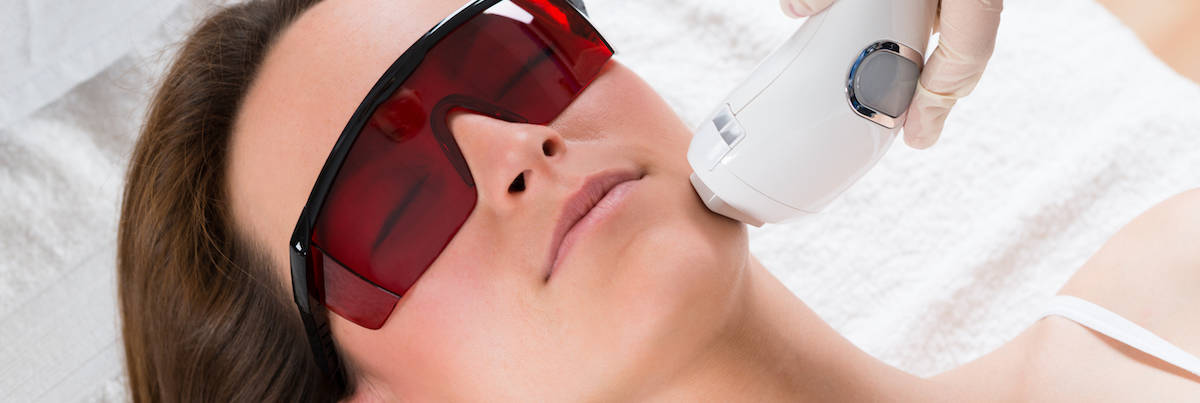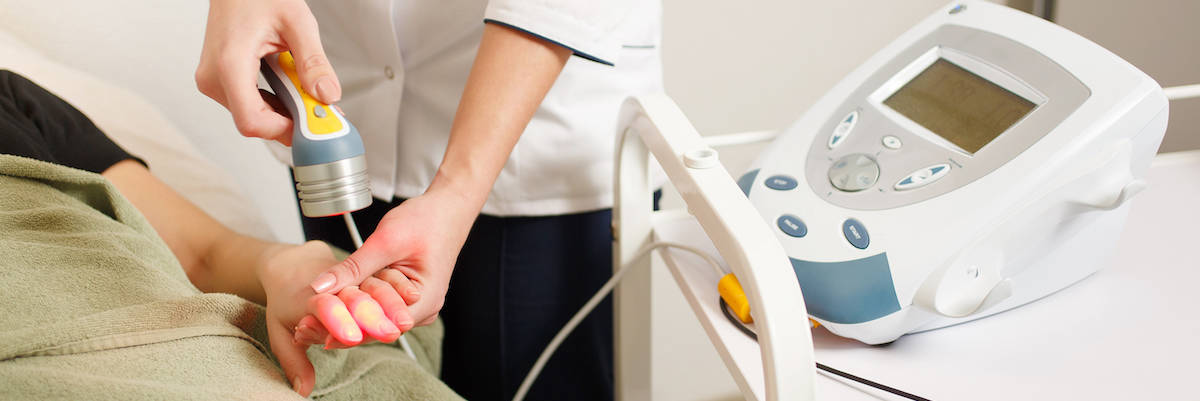Laser Treatments
1. GENERAL COSMETIC LASER QUESTIONS
What is laser therapy and how does it work?
Laser therapy is a safe, effective, and commonly used treatment, providing optimal results in areas such as the removal of unwanted hair, skin rejuvenation, wrinkle reduction, leg veins, or tattoos as well as the treatment of acne.
Lasers work by delivering an intense beam of light that is absorbed by the skin. This light is converted to heat and is absorbed by the cells being targeted, while leaving the surrounding tissue unaffected. Candela lasers feature a patented skin-cooling device for even greater patient comfort and safety and better results.
What will my treatment be like?
You and your practitioner will wear safety glasses to protect your eyes during the procedure. The practitioner will use a small handpiece that touches your skin to deliver the light. You may feel a light spray of coolant on your skin before each laser pulse.
How long will my treatment take, and how many treatments will I need?
Every treatment, like every patient, is unique. Consult your practitioner to decide what is best for you based on your needs and expectations.
What precautions should I take before or after my treatment?
In general, avoid sun exposure for 4-6 weeks before treatment and again after treatment until your physician allows it. Care should be taken in the first few days following treatments to avoid scrubbing or rinsing the treated area with abrasive skin cleansers. Consult your practitioner for specific precautions that relate to your individualized treatment plan.
What is a Pulsed Dye Laser?
Pulsed Dye Lasers deliver an intense but gentle burst of light into selectively targeted areas of the skin. The light is absorbed by specific blood vessels or melanin-pigmented areas in the dermis, depending on the condition being treated. Factors such as the age, color and type of lesions, as well as the location on the body, all determine whether lesions can be removed.
What is the procedure for being treated with a Pulse Dye Laser?
Your practitioner will ensure you are as comfortable as possible. Most patients are reclined or lying down depending on the area being treated. Both the patient and the practitioner will be wearing protective eyewear. When treatment begins, the laser will be calibrated and parameters will be set based on the specific condition being treated. Each condition and each individual is unique and these settings maximize the results you will see following treatment.
Are there any requirements for treatment and how do I know if I qualify for treatment?
The only requirement is that you have a desire to improve the condition of your skin. Most patients who receive cosmetic laser treatment opt for procedures to correct skin conditions not out of medical necessity, but because they are interested in improving the appearance of their skin without invasive surgery that would cause downtime away from daily activities. From total facial rejuvenation, which involves the reduction and removal of red and brown pigmented lesions with a general firming of the skin, to the removal of sun-spot damage, patients should discuss with their practitioner which treatments are right for them.
Does it hurt?
No anesthetics are required, but they may be used. The feeling most patients report is a warming or tingling sensation during treatment. The skin being treated is additionally protected by Candela’s dynamic cooling method, DCD, which delivers a cooling mist to the skin before the laser pulse is emitted. This cooling mist increases comfort during treatment, as well as protects the skin to minimize side effects like redness.
Is PDL Treatment safe?
Yes. In fact, treatment is so safe that it has been successfully used since the 1980’s for the treatment of port wine stain birthmarks in infants and young children. During treatment, the epidermis is protected by Candela’s exclusive dynamic cooling method, DCD, which sprays a cooling mist onto the targeted area of skin before each laser pulse, maximizing comfort and protecting the skin during treatment.
Are the results of Pulse Dye Laser Treatment Permanent?
Permanency of results depend on many factors, like the condition being treated or lifestyle of the patient. For example, if a patient has sunspots removed, and continues to spend time in the sun without adequate skin protection, it is likely that the sunspots will return. Talk with your practitioner about your goals and expectations for treatment.
How soon will I see results of my treatment?
Most patients notice beneficial results right away and often times feel a firming or tightening of the treated area. The results of laser therapy vary depending on the condition that is being treated and the number of treatments required for clearance.
What are the Side Effects of Treatment?
Some patients experience redness or mild swelling in the treated area immediately following treatment, but this usually goes away in a few hours. Occasionally purpura, a laser bruise, may occur. Purpura is transient and usually disappears in three to five days.
Are there any special precautions I need to take before or after treatment?
It is recommended to avoid sun exposure before and throughout treatment to maximize results. A sunblock of SPF 30 or higher should be worn daily during this time. Post treatment care guidelines depend on the condition treated and should be discussed with your practitioner.
Is Pulse Dye Laser Treatment covered by insurance?
Most insurance companies do not offer reimbursement for cosmetic and aesthetic procedures. Some carriers will, however, cover the treatment of disfiguring birthmarks such as hemangiomas or port wine stains. In addition, the treatment of psoriasis and rosacea may be covered by some insurance companies. Please consult your insurance carrier for more details.
How much does Pulse Dye Laser Treatment Cost?
Cost depends on the size of the area being treated as well as the condition being treated. Talk with your practitioner to learn more about treatment fees.
2. LASER TREATMENT FOR ROSACEA AND FACIAL VEINS
What are some skin conditions that can be improved with laser treatment?
Our office uses the Vbeam® laser for treatment of vascular lesions. This laser is ideal for patients with vascular rosacea, facial telangiectasias (red facial veins), peri-orbital (eye area) wrinkles, and angiomas. Please schedule a consultation for pricing information.
How does the laser work for facial veins?
The laser emits specific wavelengths of light to treat the tiny visible blood vessels just under the skin. The heat from the targeted therapy builds in the vessels causing them to collapse.
How many sessions will I need?
The number of laser sessions depends on the size, location, depth and color of your lesion. Spider veins on the face and age spots generally do well with one or two treatments, while darker or deeper birthmarks may require additional treatments.
Do treatments for skin lesions hurt?
Some patients say they feel a slight sting, like the snap of a rubber band on the skin, followed by the feeling of sunburn. Many treatments do not require anesthetics. However, some patients feel more comfortable with a local numbing agent like ice or an anesthetic cream.
3. LASER TREATMENT OF SOLAR LENTIGOS AND/OR SUNSPOTS
What types of lesions does the GentleLase laser treat?
Physicians and practitioners are using this laser to treat a variety of conditions, including: Sun Damaged Skin, Age Spots, Freckles, Melasma, Cafe-au-lait lesions.
Who is a candidate for laser?
Just about everyone has brown spots on their skin. Age spots (solar lentigos), freckles, and birthmarks are just a few of the commonly known marks generally referred to as pigmented lesions. Most brown spots that develop later in life are caused by overexposure to the sun’s damaging rays.
With laser treatment, these annoying brown spots can be safely and effectively removed. Please schedule a cosmetic consultation for more information.


